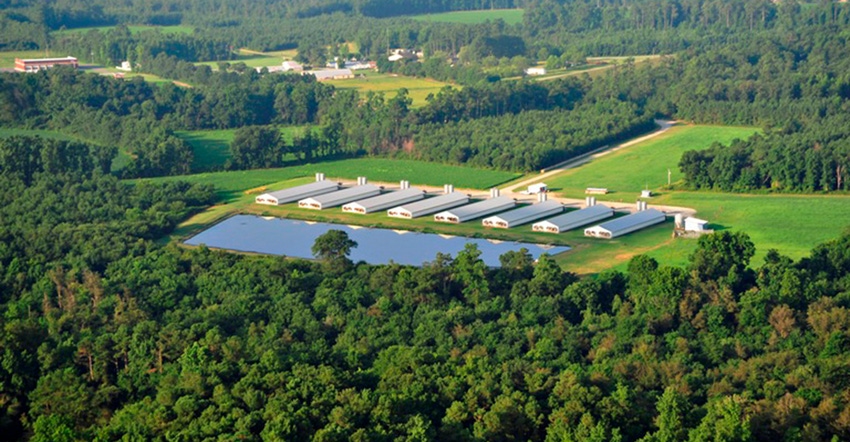Preliminary results highlight the complex nature of space, time and genetic relatedness relationships when assessing porcine reproductive and respiratory syndrome virus transmission.
October 8, 2019

By Mariana Kikuti, Juan Sanhueza, Carles Vilalta, Kim VanderWaal and Cesar A Corzo, University of Minnesota Morrison Swine Health Monitoring Project
Understanding disease occurrence is key to developing preventive and intervention strategies. In the case of porcine reproductive and respiratory syndrome virus, many epidemiological features have been unveiled leading to the development and implementation of preventive strategies. However, farms continue to break especially those within high-density regions. One of the questions that continues to remain unanswered is whether viruses within a neighborhood look alike. The assumption today is that if my neighbor’s farm becomes infected, my farm will break as a result of area spread. Today there is data that may or may not support this theory. At the University of Minnesota, we are working toward helping understand area spread through a different approach.
Through the Morrison Swine Health Monitoring Project, which is a national voluntary initiative aimed at monitoring endemic swine diseases such as PRRSV, participating systems voluntarily share disease status and PRRSV sequences obtained from their routine surveillance, allowing a more comprehensive monitoring of disease trends. Thanks to these progressive producers and practitioners, the MSHMP PRRSV sequence database currently holds more than 33,000 sequences from 22 states. These sequences which are linked to a location and time allows us to further analyze them and extract and return value to producers and practitioners. With this extensive dataset, we aimed to assess first if the occurrence of PRRSV was clustered in space and time.
If clustering was detected, we then assessed whether sequences and restriction fragment length polymorphism inside clusters were less diverse than sequence diversity outside the cluster. This could potentially indicate that a local component of transmission (e.g. through pig movement, fomite or airborne) might help explain the agglomeration of cases in a specific period and space.
For the analysis, the database was then simplified by removing sequences that 1) had no date or location information, 2) were identical (i.e. 100% nucleotide identity) and from the same farm up to 30 days apart as this was considered repeated sampling, and 3) sequences considered vaccine-like (≥98% nucleotide identity with strain VR2332). Because sequences were mostly distributed in two different U.S. regions, analysis was stratified per region as defined by the U.S. Census. At the end, we worked with 6,959 PRRSV sequences from 2010-19: 1,382 from Region 1 and 5,197 from Region 2. When clusters were identified, all sequences from clusters were considered cases and all sequences outside clusters but from the same time period (plus or minus three months) and region were considered controls for further analyses.
Three space-time clusters were found in Region 1 and 25 in Region 2. Clusters ranged from 0.6- to 75.5-kilometer radius (approximately 0.4 to 46.9 miles) and from six to 286 days in duration which included between four and 57 sequences. Overall, the similarity of PRRSV sequences was higher within the cluster when compared to similarity outside the cluster. With regards to the RFLP diversity analysis we found that there was less diversity within the cluster when compared to the diversity outside the cluster. Interestingly, one cluster did not show any differences in either mean percent nucleotide identity and RFLP diversity between cases and controls, suggesting space-time agglomeration might have been random. Overall, these findings are suggesting that when a virus enters a neighborhood it may spread; however, this finding was not frequent leading us to think that multiple viruses are brought into a neighborhood and do not seem to spread as one may think.
Further analyses are still in place, but these preliminary results highlight the complex nature of space, time and genetic relatedness relationships when assessing PRRSV transmission. Unfortunately, focusing on overall trends may lead to over conclusions as we might miss important case information. It also highlights the importance of maintaining a comprehensive up-to-date dataset that could eventually allow for prospective monitoring new regional outbreak occurrences, allowing for timely interventions.
Finally, this study continues to invite producers and practitioners to share information with their neighbors with the aim of learning together and perhaps attempting to pinpoint transmission pathways.
Sources: Mariana Kikuti, Juan Sanhueza, Carles Vilalta, Kim VanderWaal and Cesar A. Corzo, who are solely responsible for the information provided, and wholly own the information. Informa Business Media and all its subsidiaries are not responsible for any of the content contained in this information asset.
You May Also Like



